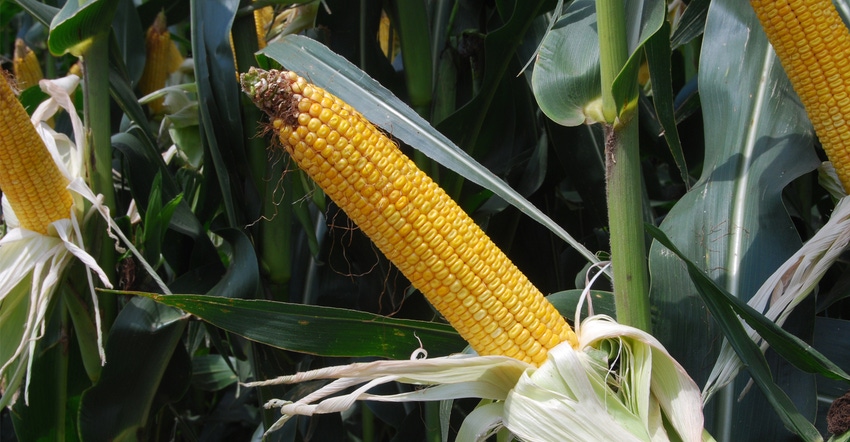August 21, 2020

On Aug. 10, a massive derecho line of storms ravaged a huge crop production area in Iowa and neighboring states. With a snap of Mother Nature’s fingers, the anticipated normal part of the year for a big part of Iowa was turned on its head. In early August, it appeared we were positioned to harvest a record crop, even despite some areas that were too dry this summer. But now, the storm damage is likely to move the overall production needle lower, particularly for corn acres.
Farmers and landowners will look to capture every bushel possible. The formula for success this year appears tied to an approach where producers attempt to “out-bushel” the commodity market weakness. This may be a struggle to accomplish for cornfields that were snapped flat on the ground. In those circumstances, we see how valuable crop insurance can be. A reminder of how important every decision we make in the springtime can prove to be several months later.
Decisions influence outcomes
Our decisions certainly influence the outcomes we experience year to year and over the long term. Like I tell my kids, if you can stack one good decision on top of another, over the long term, you will succeed more often than not. Good decision making does not guarantee anything, but it does better position you to succeed.
Long-term thinking and profitability is also a key to the current farmland market. Said another way, most farmers and landowners have learned to play the “long game” really well. What occurs in any one year does not cast the die for the market forever, good or bad. This has never been clearer to me than in 2020. While so many parts of our society seem to be on fire, the farmland market has very much kept its head.
Reasons for resilience
There are still more people who want to buy land than who want to sell land. There are several reasons for this resilience including little overall leverage, ultra-low interest rates, low inventory of farms for sale, and strong long-term performance relative to other investment alternatives.
What happens in your local neighborhood this fall with harvest results will either goose the bidding at sales, or maybe cause people to sit heavy on their hands. The impacts of COVID-19, the recent monster storm and other factors will impact our farmland market this fall. But overall, farmland as an asset class has never reflected stability like it has in 2020. And that stability only seems to add to the collective desire by the market to own more. How do I come to that conclusion? The sales below, and those of the past six months, just continue to impress me.
Northwest
Palo Alto County. East of Ruthven, 57 acres sold at public auction for $7,950 per acre. The farm has 53 tillable acres with an 87.8 CSR2, which equals $97 per CSR2 point on the tillable acres.
North central
Floyd County. Near Nashua, 92 acres sold for $7,250 per acre. The farm has 84 tillable acres with an 88.8 CSR2, which equals $89 per CSR2 point on the tillable acres.
Northeast
Black Hawk County. Southeast of Dunkerton, 73 acres sold at public auction for $10,200 per acre. The farm has 70 tillable acres with an 87.8 CSR2, which equals $121 per CSR2 point on the tillable acres.
West central
Shelby County. Southeast of Harlan, 113 acres sold at public auction for $9,150 per acre. The farm has 101 tillable acres with an 83.4 CSR2, which equals $123 per CSR2 point on the tillable acres.
Central
Hamilton County. West of Blairsburg, 140 acres sold via one-chance sealed bid sale for $8,515 per acre. The farm has 134 tillable acres with an 83.5 CSR2, which equals $107 per CSR2 point on the tillable acres.
East central
Linn County. West of Walker, 154 acres sold at public auction for $7,400 per acre. The farm has 137 tillable acres with a 79.2 CSR2, which equals $105 per CSR2 point on the tillable acres.
Southwest
Adair County. Southwest of Casey, 40 acres sold for $8,097 per acre. The farm has 36 tillable acres with a 77.2 CSR2, which equals $117 per CSR2 point on the tillable acres.
South central
Madison County. Southeast of Winterset, 113 acres sold via online auction for $5,410 per acre. The farm has 74 cropped acres with a 67.5 CSR2 while the balance of the farm (39 acres) is pasture and grass waterways.
Southeast
Washington County. North of Washington, 80 acres sold for $7,375 per acre. The farm has 65 tillable acres, with a 67.8 CSR2, which equals $134 per CSR2 point on the tillable acres.
Hensley is president of Hertz Real Estate Services, which compiled this list but did not handle all sales. Visit hertz.ag.
Read more about:
Covid 19About the Author(s)
You May Also Like






